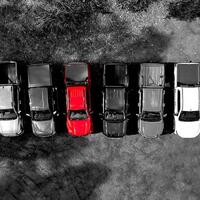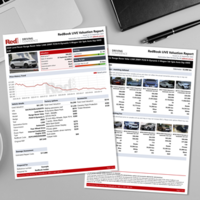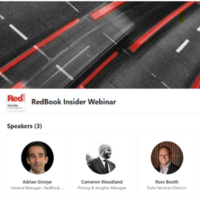The RedBook Insider: Emerging Divergence in the Popular 4x4 Ute Segment: Heavy-Duty Performance vs Hybrid-Electric Innovation
Australia’s 4x4 ute market is at a fascinating inflection point. On one hand, OEMs like Ford Australia are doubling down on power, launching the Ranger Super Duty - a behemoth built for serious towing and off-road capability. On the other, disruptors like BYD are entering the fray with the Shark 6, a plug-in hybrid ute that’s redefining what “light commercial” can mean in a carbon-conscious era.
But why launch a super-sized diesel ute now, especially under the shadow of the New Vehicle Efficiency Standards (NVES)? The answer lies in entrenched demand. Tradies, fleets, and rural buyers still need payload, ground clearance, and torque. The Ranger Super Duty isn’t just a statement; it’s a solution for sectors that can’t compromise on capability.
Yet the numbers suggest a shift is underway. As of August 2025, VFACTS is showing the total 4x2 segment is down -13.5%. Even the stalwart 4x4s are slipping: Ranger (-13.1%), Navara (-15.5%), Hilux (-8.4%), and D-Max (-9.3%). These aren’t blips, they’re signals. The ute’s dominance is no longer guaranteed.

Enter the Shark 6. With its hybrid drivetrain and urban-friendly efficiency, it’s not chasing the same buyers, it’s creating new ones. Families, small business owners, and eco-conscious drivers are finding utility without the diesel guilt. And with NVES penalties looming, fuel-efficient models like the Shark 6 may soon become the default, not the alternative. It’s already carved out a 9% share of the 4x4 segment year-to-date, with the biggest share losses coming from Ranger, Hilux, D-Max, and Amarok.
Beyond sales, retained value tells another story. According to RedBook data, the BYD Shark 6 is holding up relatively well, with a modest -0.9% decline in retained value year-on-year, sitting at 84%. In contrast, traditional diesel incumbents are seeing sharper drops: the Ford Ranger is down -4.1% (71%), the Isuzu D-MAX -9.5% (83%), and the GWM Cannon -9.1% (69%). Even the GWM Ute and Cannon Alpha are down -7.1% and -3.3% respectively. These figures suggest that while the broader market is softening, newer, more efficient entrants like the Shark 6 are weathering the shift better, perhaps a sign of changing buyer priorities and a growing appetite for lower-emission alternatives.
Contrastingly, RedBook feel that vehicles like the Super Duty could buck the trend we’re seeing amongst less purposeful offerings, appealing to a large audience in this market at least that aren’t as swayed by NVES and more by capability or application. Could we see the segment diverge into very purposeful vehicles at one book end whilst the other end ushers in more of what we see from BYD and alike. Without electrified variants, they risk falling behind both in compliance and consumer appeal.
The ute isn’t going extinct—it’s evolving. The question isn’t whether Australians will still want utes. It’s what kind of ute they’ll want. Will it be a Super Duty diesel built for the bush, a hybrid Shark built for the suburbs, or a Quartermaster built for the outback? The answer may lie not in torque specs, but in how well OEMs adapt to a market that’s asking harder questions about efficiency, emissions, and relevance.
For more information, contact RedBook on info@redbook.com.au
Recent Posts
-
 The RedBook Insider: Emerging Divergence in the Popular 4x4 Ute Segment: Heavy-Duty Performance vs Hybrid-Electric Innovation30th September 2025
The RedBook Insider: Emerging Divergence in the Popular 4x4 Ute Segment: Heavy-Duty Performance vs Hybrid-Electric Innovation30th September 2025 -
 The RedBook Insider: Introducing RedBook LIVE: Smarter, Faster, and More Accurate Automotive Intelligence30th September 2025
The RedBook Insider: Introducing RedBook LIVE: Smarter, Faster, and More Accurate Automotive Intelligence30th September 2025 -
 The RedBook Insider: Introducing the RedBook Insider Webinar Series30th September 2025
The RedBook Insider: Introducing the RedBook Insider Webinar Series30th September 2025
